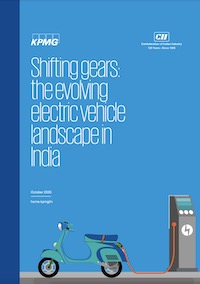Gatsby's Inspirations: Unveiling The Real Men Behind The Myth

Table of Contents
The Gilded Age Tycoons: Parallels to Gatsby's Extravagance
Gatsby's opulent lifestyle is undeniably reminiscent of the Gilded Age, a period of immense wealth and excess that profoundly influenced Fitzgerald's portrayal.
The Influence of Wealth and Excess
The Roaring Twenties, the setting of The Great Gatsby, witnessed a societal fascination with wealth and extravagance. This was a direct legacy of the Gilded Age (roughly 1870-1900), a time marked by unprecedented industrial growth and the accumulation of vast fortunes by a select few.
- Examples of Gilded Age extravagance: The Vanderbilts, with their opulent mansions and lavish parties, and the Astors, known for their social dominance and extravagant spending, provide clear parallels to Gatsby's lavish lifestyle. These families' extravagant displays of wealth mirrored the excesses Fitzgerald depicted in his novel.
- Comparing lifestyles: Both Gatsby and these Gilded Age figures enjoyed throwing extravagant parties, attracting a glamorous crowd, and projecting an image of immense wealth, often obscuring the origins of their fortunes. Gatsby’s parties, in their scale and excess, directly echo the lavish social gatherings of the era's elite. The key difference lies in the ambiguity surrounding Gatsby's wealth, a stark contrast to the often-public (and sometimes controversial) sources of wealth of Gilded Age tycoons.
The Self-Made Man Myth
Gatsby's appeal lies partly in the alluring myth of the self-made man. His ambiguous past and relentless pursuit of wealth resonate with the American Dream narrative – the belief that anyone, regardless of their origins, can achieve success through hard work and determination.
- The American Dream and Gatsby: Gatsby's relentless pursuit of Daisy, inextricably linked to his pursuit of wealth, perfectly embodies the American Dream’s seductive and often elusive nature. He believes that by achieving immense wealth he can buy his way into the social circles he desires. This aspiration echoes the widespread belief in upward mobility during this era.
- Real-life self-made men: Many successful entrepreneurs and industrialists of the era, while not necessarily involved in illegal activities like Gatsby, built their empires from the ground up, fueling the popular imagination and reinforcing the appeal of the self-made man myth. Their stories, whether factual or embellished, provided fertile ground for Fitzgerald's characterization. Gatsby, however, represents a darker side of this myth, showcasing the potential for moral compromise in the pursuit of the American Dream.
The Bootleggers and the Roaring Twenties Underworld
Gatsby's wealth is shrouded in mystery, hinting at possible involvement in the illegal activities rampant during the Prohibition era.
Gatsby's Illicit Activities and Their Real-Life Counterparts
The Prohibition of alcohol (1920-1933) created a vast underground market, dominated by powerful bootleggers and gangsters. Gatsby’s ambiguous business dealings strongly suggest involvement in such illicit activities.
- Historical Parallels: Figures like Al Capone, infamous for his ruthless tactics and vast criminal empire built on bootlegging, provide a direct historical parallel to Gatsby's shadowy business dealings. The parallels are not direct – Gatsby isn't explicitly a violent gangster – but the underlying source of his wealth mirrors the criminal enterprises of the era's most notorious figures.
- Organized crime and Gatsby's wealth: The extent of Gatsby's involvement in organized crime remains a matter of speculation within the novel. However, the fact that his wealth is never fully explained, coupled with the pervasive presence of illegal activities during the Prohibition era, creates a compelling link between Gatsby's prosperity and the shady underworld of the Roaring Twenties.
The Shadowy World of the Jazz Age
The Jazz Age was not just about flapper dresses and jazz music; it was an era of moral ambiguity, where the lines between right and wrong blurred. This moral gray area significantly shaped Gatsby’s character and actions.
- Societal acceptance of illegality: The widespread flouting of Prohibition laws created a climate where illegal activities, while technically criminal, were often tolerated, if not openly embraced, by society’s upper echelons. This created a fertile ground for characters like Gatsby to thrive. The novel subtly critiques this societal acceptance of amorality.
- The moral complexities of Gatsby's wealth: Gatsby’s wealth, potentially derived from illegal activities, presents a stark contrast to the outwardly respectable individuals he seeks to emulate and impress. This internal conflict reflects the complex moral landscape of the era and adds to Gatsby's tragic allure.
Fitzgerald's Personal Life: A Reflection in Gatsby's Story
Fitzgerald's own life experiences significantly influenced the creation of Gatsby. His personal struggles with wealth, social class, and love are mirrored in the novel.
The Author's Own Experiences and Relationships
Fitzgerald's tumultuous relationship with Zelda Sayre provides a compelling insight into Gatsby's obsessive pursuit of Daisy.
- Zelda and Gatsby: The parallels between Fitzgerald and Zelda's relationship and Gatsby's pursuit of Daisy are striking. Both involve a passionate yet complex love affair, complicated by social barriers and the characters' individual ambitions. Fitzgerald’s personal experiences with love and loss undoubtedly informed his depiction of Gatsby's romantic obsession.
- Fitzgerald’s social aspirations: Fitzgerald’s own social aspirations and his struggle to gain acceptance within the wealthy elite are reflected in Gatsby’s yearning for belonging among the established social circles. Gatsby's tireless efforts to win Daisy’s affection are mirrored in Fitzgerald’s own relentless pursuit of Zelda.
The Search for Identity and Belonging
Gatsby's yearning for acceptance and belonging resonates with Fitzgerald's own struggles with identity and social standing.
- Gatsby's recreated identity: Gatsby’s fabricated past and his relentless attempt to reinvent himself to fit into the upper class directly parallels Fitzgerald's own aspirations for social mobility. Gatsby’s character is, in many ways, an idealized version of Fitzgerald's own self-perception.
- Fitzgerald's personal struggles: Fitzgerald’s own experiences of social climbing, alongside his struggles with financial instability and his internal conflict regarding his identity, significantly influenced Gatsby's internal conflicts and ultimate tragic fate.
Conclusion
In conclusion, Gatsby's Inspirations extend far beyond the pages of Fitzgerald's novel. The Gilded Age tycoons, the shadowy figures of the Prohibition era, and Fitzgerald's own life experiences all converged to create the complex and enduring character of Jay Gatsby. Understanding these historical and biographical influences allows for a richer appreciation of this timeless literary masterpiece and the complexities of the Jazz Age that birthed it. To delve deeper into the historical context of The Great Gatsby and explore further aspects of Gatsby's Inspirations, we recommend researching the lives of prominent Gilded Age figures, exploring books on the Prohibition era and organized crime, and reading biographies of F. Scott Fitzgerald and Zelda Sayre. By understanding Gatsby's inspirations, we gain a richer appreciation of this timeless literary masterpiece and the complex historical era that gave birth to it.

Featured Posts
-
 Leonardo Di Caprio Spy Thriller Streaming Now On Netflix
May 13, 2025
Leonardo Di Caprio Spy Thriller Streaming Now On Netflix
May 13, 2025 -
 Indore Reaches 40 Celsius Heatwave Alert And Health Advisory
May 13, 2025
Indore Reaches 40 Celsius Heatwave Alert And Health Advisory
May 13, 2025 -
 Brazils Shifting Ev Landscape Byds Expansion And Fords Retreat
May 13, 2025
Brazils Shifting Ev Landscape Byds Expansion And Fords Retreat
May 13, 2025 -
 A Realistic Perspective On Tasmans Road Infrastructure
May 13, 2025
A Realistic Perspective On Tasmans Road Infrastructure
May 13, 2025 -
 Could 3 Mortgage Rates Reignite Canadas Housing Market
May 13, 2025
Could 3 Mortgage Rates Reignite Canadas Housing Market
May 13, 2025
Latest Posts
-
 Your Guide To Buying A Byd Seal Everything You Need To Know
May 13, 2025
Your Guide To Buying A Byd Seal Everything You Need To Know
May 13, 2025 -
 Promosi Terhad Tempah Byd Ev Di Mas 2025 Dapat Rm 800 And Layan Konsert 9 15 Mei
May 13, 2025
Promosi Terhad Tempah Byd Ev Di Mas 2025 Dapat Rm 800 And Layan Konsert 9 15 Mei
May 13, 2025 -
 Is The Byd Seal Right For You A Detailed Buyers Guide
May 13, 2025
Is The Byd Seal Right For You A Detailed Buyers Guide
May 13, 2025 -
 Dapatkan Rm 800 Kredit Cas Dengan Tempahan Byd Ev Di Mas 2025 9 15 Mei
May 13, 2025
Dapatkan Rm 800 Kredit Cas Dengan Tempahan Byd Ev Di Mas 2025 9 15 Mei
May 13, 2025 -
 Complete Byd Seal Buying Guide Specs Price And More
May 13, 2025
Complete Byd Seal Buying Guide Specs Price And More
May 13, 2025
